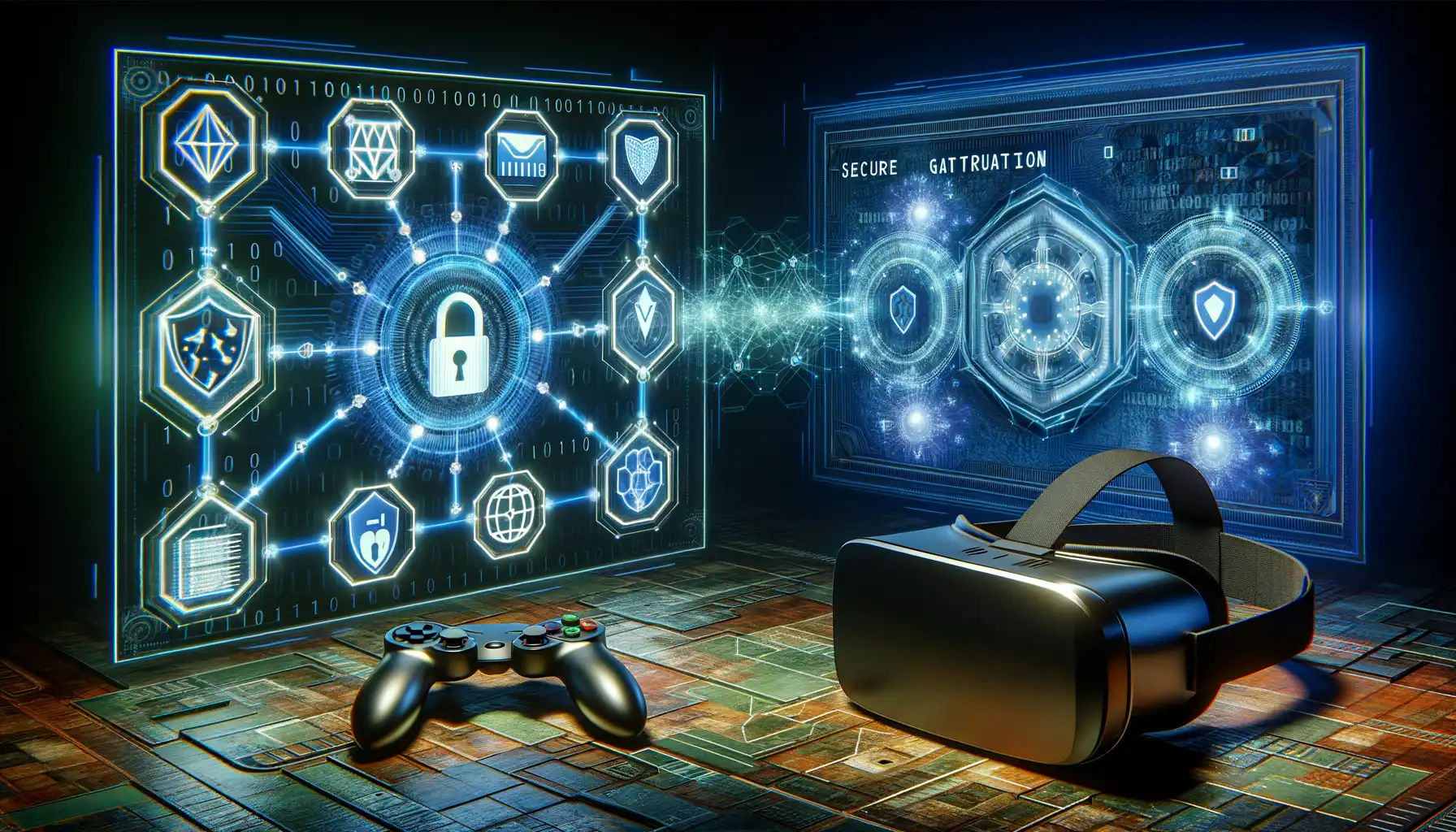The Intersection of Virtual Reality and Cybersecurity
Where VR Adventures Meet Cyber Risks
Picture this: you’re fully immersed in a breathtaking virtual world, exploring digital landscapes so vivid they feel tangible. But behind the scenes of this awe-inspiring tech lies an intricate web of vulnerabilities waiting to be exploited. Virtual reality isn’t just a playground for gamers or a tool for professionals; it’s also a new hunting ground for cybercriminals.
In VR, your every move, gesture, and even your voice can become a data point. These aren’t just harmless crumbs—they’re breadcrumbs leading straight to your digital identity. Imagine someone hijacking your VR headset mid-session or accessing sensitive biometric data from your movements. Sounds like science fiction? Unfortunately, it’s not.
Cybersecurity must evolve to meet these challenges head-on. After all, in VR, the stakes are personal:
- Your iris scan could be used as a password.
- Your physical surroundings, mapped into VR, could reveal private details of your life.
- Hijacked avatars could disrupt corporate collaborations or social experiences.
The lines between digital and reality are blurring. In this space, protecting your virtual world is as vital as locking your front door.
Emerging Threats in the VR Landscape

The Hidden Dangers Lurking in a VR World
Picture this: you’re fully immersed in a breathtaking virtual world, exploring distant galaxies or walking through ancient ruins. But behind the scenes, a storm could be brewing. The rise of Virtual Reality (VR) has opened doors to groundbreaking experiences—but it’s also created an irresistible playground for cybercriminals.
Today’s threats aren’t just about email phishing scams or stolen credit card info anymore. In the VR world, hackers can creep into your most personal spaces—your own senses. Imagine someone hijacking your VR environment, distorting what you see and hear, leaving you feeling disoriented and vulnerable. It sounds like science fiction, but these “reality distortion” attacks are already on cybersecurity radars.
What Are Hackers Targeting in Virtual Reality?
Hackers are getting crafty with how they exploit VR platforms. Some key vulnerabilities include:
- Motion trackers and sensors: Cybercriminals can manipulate these to mess with your physical experience, potentially causing harm while you’re immersed.
- User data leaks: Your biometric data—heart rate, eye movements, even fingerprints—can be stolen and misused in ways we’re only beginning to understand.
- Network weaknesses: Multiplayer VR environments are ripe for breaches, where hackers can infiltrate and steal information from groups of users.
What’s scarier? Many VR systems prioritize seamless interfaces over fortified protection. It’s like locking the front door of a house but leaving all the windows wide open.
Innovative Cybersecurity Solutions for VR

Revolutionizing VR Defenses with Cutting-Edge Strategies
Picture this: you’re fully immersed in a stunning virtual world, your senses hijacked by a vibrant digital reality. But lurking in the shadows of that seamless experience are invisible threats—hackers, data thieves, even malicious code capable of crashing your personal utopia. Enter the realm of innovative cybersecurity solutions for VR, where technology and creativity collide to keep your virtual adventures safe.
To combat threats, companies are deploying tools straight out of a sci-fi thriller. For example, developers are leveraging AI-driven algorithms that can sniff out unusual behavior in real time, like a bloodhound tracking an intruder. Feeling paranoid about someone hijacking your avatar? Blockchain-based ID verification ensures that only you hold the keys to your identity.
- Dynamic encryption protocols: These move as fast as your VR applications do, adapting to secure every interaction.
- Behavioral anomaly detection: Think of it as a guardian angel, constantly scanning for out-of-place movements in the system.
What’s incredible is how these solutions blend into the background. You could be battling dragons or hosting a virtual board meeting, and these technologies protect you without disrupting the magic. It’s innovation at its finest, safeguarding not just your data, but your peace of mind.
Implications for Personal and Corporate Security

Your Personal Digital Fortress: What’s at Stake?
Imagine standing in your VR living room, about to join a virtual meeting, when suddenly – a breach. Not outside your virtual walls but within them. The idea that someone could infiltrate your safe digital space feels startling, doesn’t it? Well, that’s the reality when cybersecurity and VR collide.
For individuals, this isn’t just about losing a password. It could mean the exposure of deeply personal data:
- Biometric details, like eye movement or voiceprints, that could be used to impersonate you online.
- Behavioral patterns, such as how you speak or even type, that might reveal more about you than you intended.
Now, scale that up for businesses using VR for collaboration, product design, or training. A single breach could mean:
- Leaked trade secrets worth millions.
- Sensitive client data being weaponized against your brand.
- The erosion of trust from employees and partners alike.
Cyber threats in VR aren’t just theoretical—they’re tangible, often hidden in plain sight like wolves disguised in sheep’s clothing. And what’s at stake? Everything you’ve worked to keep secure: identity, privacy, and trust.
Breaking Down Barriers—And Building Them Back Stronger
But don’t despair. This isn’t a doomsday prophecy; it’s a wake-up call. Companies are already reshaping their approaches by embedding proactive defenses directly into VR platforms. Think of it like building an impenetrable castle around your virtual world.
We see tools like multi-factor identification stepping up the game. Imagine logging into your VR workplace not just with a password but also with retinal scans and location tracking. Layers of defense make all the difference.
On the personal front, keeping your everyday VR systems updated is as crucial as locking your front door. And let’s not forget about education—because knowing where the dangers lurk empowers you to sidestep them altogether.
Your virtual self deserves the same level of safeguarding as your physical self. After all, in a world where lines between reality and virtuality blur, security must hold firm as our guiding compass.
Future Trends and Challenges in VR Cybersecurity

New Frontiers: The Next Wave of VR Security Concerns
Imagine stepping into a vibrant, bustling VR marketplace—avatars chatting, neon-lit storefronts glowing, and digital goods ready for trade. Sounds thrilling, right? But beneath this dazzling surface lies a brewing storm of cybersecurity challenges that could impact both individuals and businesses. As VR evolves, so do the threats hiding in its shadows.
Take biometric hacking, for instance. In VR, your every move—like head tilts or hand gestures—is data. While this enhances immersion, it also creates a goldmine for hackers. They could steal your personal movement patterns or even reconstruct your identity. Then, there’s the rise of deepfake avatars. Imagine attending a virtual meeting and realizing someone’s stolen your boss’s avatar to sabotage decisions. Chilling!
- AI-driven attacks: Malicious programs that adapt and counteract standard defenses.
- Social engineering in VR: Scammers are already leveraging VR environments to manipulate trust.
Adapting to Unpredictable Security Terrain
The future isn’t just about defense—it’s about staying ahead of the curve. Developers must anticipate threats before they hit mass adoption. Picture interactive firewalls that adapt in real-time or AI watchdogs monitoring environments for unusual behavior. Yet, here’s the twist: How do you balance airtight security with user freedom? After all, nobody wants to feel like their every virtual step is under surveillance.
As the VR ecosystem becomes intertwined with our daily lives, solutions will need creativity, foresight, and a touch of boldness to match the dreams it brings to life.












